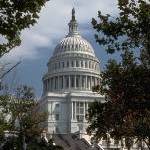
Whether Trump or Biden is elected in November, they will have to decide whether or not to appoint Federal Reserve Chair Jerome Powell to another term.
And if he is appointed again, the way he continues to handle the continuing ripple effects of the COVID-19 “shutdown” economy will be critical.
So let’s examine why the decision to reappoint him is important, then take a quick tour of some of Powell’s recent performance.
A piece from Paul R. La Monica provides a take on the importance of Powell’s re-appointment, beginning with the response to the market’s plummet earlier this year:
The Fed quickly lowered rates to zero in March and has since launched trillions of dollars worth of lending programs… Powell’s swift actions have won him praise from many economists and investing experts on Wall Street.
“Powell should get a second term if he wants it. He deserves credit for the speed and magnitude of the Fed’s response to Covid-19,” said Larry Adam, chief investment officer of Raymond James.
Mr. Adam and the article are correct on one point. The Powell-authorized “moon shot” in response to a dramatic market drop was certainly a fast move.
George Calhoun, professor of quantitative finance at the Stevens Institute of Technology, agreed with Powell’s quick decision to print trillions:
When the crisis hit, Powell went all out and opened the spigots. I’m not sure what rationale would be to have someone totally different at the Fed. Monetary policy has been effective.
Any person in Powell’s position could have made the same call, of course. We just have to hope that the long-term ripple effects don’t eventually reveal that his reaction was too much, too fast, or perhaps unnecessary.
…click on the above link to read the rest of the article…


 Say hello to the provider of bacon… lots of bacon, in this case. [PT]
Say hello to the provider of bacon… lots of bacon, in this case. [PT]









